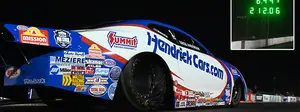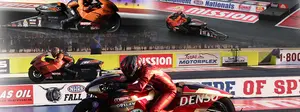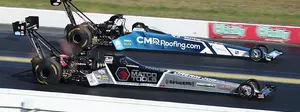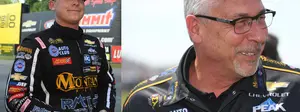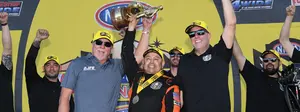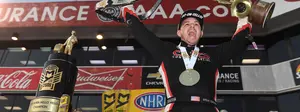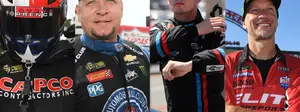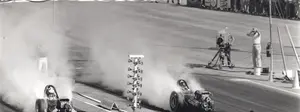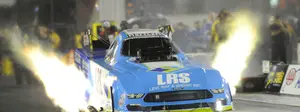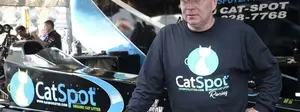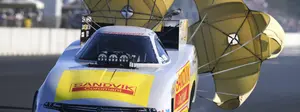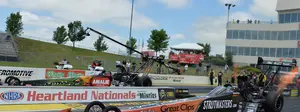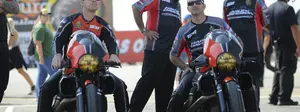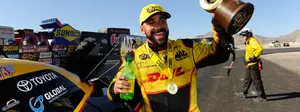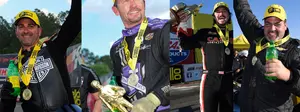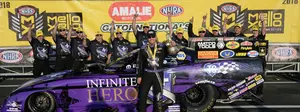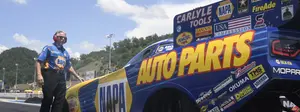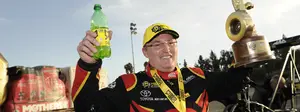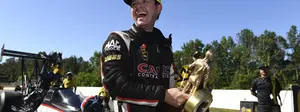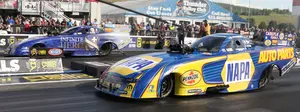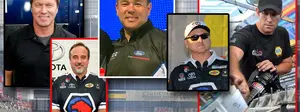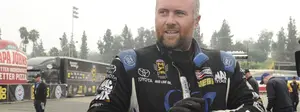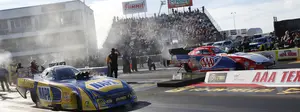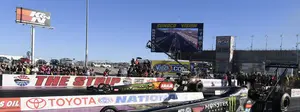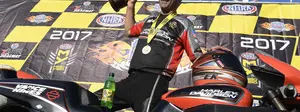

Behind the Numbers: Krawiec and Hines are back with a vengeance

When Eddie Krawiec and Andrew Hines brought out their new Harley-Davidson Street Rods at Englishtown, the competition licked its lips. For a moment, two of the most competitive riders in Pro Stock Motorcycle were vulnerable. Debuting new bodies and new chassis midseason was a bold move, and one that speaks to the confidence in the Vance & Hines team. It also came with growing pains.
Those new chassis didn’t work out the way Krawiec and Hines hoped. It’s not much of a secret that the Harley riders have switched back to a modified version of their old chassis while still utilizing the new Street Rod body. After countless hours spent chopping the new chassis to bits trying to get them to perform as desired, the Harley team knew it was time to make something happen for the Countdown.
The window of vulnerability began to shut at the Chevrolet Performance U.S. Nationals when the Harley-Davidson team switched to the old chassis. Krawiec ended up on the pole and won the event, but those sluggish 60-foot times that nagged the team since switching to the new bodies in Englishtown persisted.
After the all-Harley final in Charlotte, that window is closed. The Harleys are back in business, and that’s very bad news for the rest of the Pro Stock Motorcycle class.
Through the first three races of the season, Krawiec and Hines averaged a 1.078-second 60-foot time. That’s significantly slower than what you’ll see the high-RPM Suzukis rip off, but it’s also much quicker than what came after the body and chassis change. From Englishtown to Brainerd, the average Harley 60-foot time slowed to 1.096 seconds. That’s not good enough. The chart below will give you an idea of what they were up against.

Compare those 60-foot times to the White Alligator Racing team of Jerry Savoie and LE Tonglet. The Suzuki riders average a 1.055-second 60-foot time, giving them a big advantage in the early portion of the track. The Harleys can afford to give up some of that early power because of how strong they are through the second-half of the track; if you’ve watched enough Pro Stock Motorcycle, your eyes have already told you that.
But it’s also not breaking news to say Krawiec and Hines would like to go faster to 60 feet if possible. Giving up two-hundredths to the Suzukis is one thing, but four hundredths? That’s a bitter pill to swallow, no matter how good the Harleys are through the middle of the strip. Without sending your eyes rolling into the back of your head, here’s a brief look into the numbers that show how different these bikes run.
The correlation between the 60-foot time and the quarter-mile time of is very low for Hines and Krawiec (.351), very high for Savoie and Tonglet (.929), and lies somewhere in the middle for the entire Pro Stock Motorcycle field (.629). The closer those numbers get to one, the more in tune they are. The Harley team also has a smaller correlation between its half-track elapsed times (.784) than the White Alligator Racing team (.995) and the field (.948).
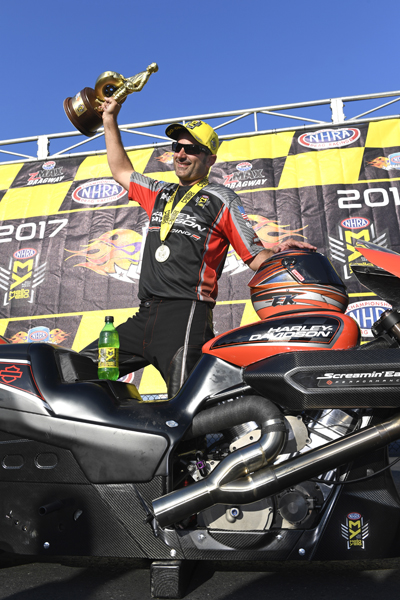 Here’s a long story made short: The Street Rods will always do most of their damage in the second half of the track. Part of those sluggish 60-foot times come from weight. The Harleys simply weigh more than the Suzukis (heck, so do most of the bikes in the class, but the Harleys especially so). This disparity isn’t totally unique to Pro Stock Motorcycle, either. There are Top Fuel Dragsters that perform better to half-track than they do to the finish line. It’s all about how the crew chief sets up their particular machine.
Here’s a long story made short: The Street Rods will always do most of their damage in the second half of the track. Part of those sluggish 60-foot times come from weight. The Harleys simply weigh more than the Suzukis (heck, so do most of the bikes in the class, but the Harleys especially so). This disparity isn’t totally unique to Pro Stock Motorcycle, either. There are Top Fuel Dragsters that perform better to half-track than they do to the finish line. It’s all about how the crew chief sets up their particular machine.
Pro Stock Motorcycle is an interesting beast because the style of the bike can dictate how it's tuned. So, for Harley tuner Matt Hines, the Street Rods pose a unique challenge. That’s not to say he’s at a disadvantage by any means, but he’s tuning the Harleys differently than say, Tim Kulungian is tuning Savoie and Tonglet’s bikes.
What’s most impressive about the Harleys struggles to 60 feet is how competitive they remained in spite of it. Krawiec won in Denver, and posted a round-record of 9-5 before making a chassis swap in Indy. Collectively, the team went 14-10 ahead of the U.S. Nationals. That speaks to the power the bikes make once thrown into gear and the riding job Krawiec and Hines do on top of them.
But that performance is a far cry from what the riders were looking for, prompting the Indy switch. In the two races since changing chassis, Hines and Krawiec have a combined round-record of 12-2. That’s getting it. Their 60-foot times at the U.S. Nationals (1.086) weren’t anything to celebrate yet, though they dipped into the 1.06s, but the NHRA Carolina Nationals looked like a turning point. Over 16 runs, the riders averaged 1.07-seconds to 60 feet.
The numbers are good, but the proof is in the results. An all Harley-Davidson final to start the Countdown is what Krawiec and Hines dreamed up. If this performance keeps up, I’ve got a feeling it won’t be the last one we see this season.























